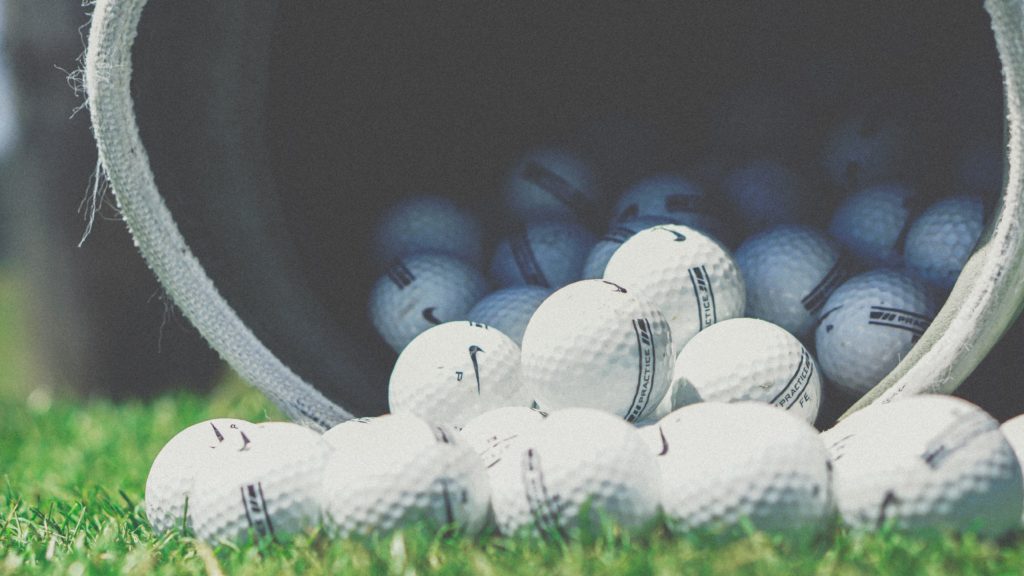
With the warmer weather finally here, many of our clients have been telling us how excited they are to get out on the golf course. Golfing is a great way to get out and enjoy the sunshine while also remaining active. However, injury is fairly common among golfers. As many as 16-40% of amateur golfers have an incidence of injury per year1. Whether you are already recovering from an injury or looking to prevent golf injuries, it is important to recognize what types of injuries are common in golfers, and what you can do to avoid them.
Some of the more common injuries seen in golfers:
Lower Back Pain
- Lower back pain is one of the most common injuries in golf, whether it is a new injury or an exacerbation of a previous injury. Low back pain from golfing is believed to be related to poor swing technique, lack of flexibility in the spine and hips, poor conditioning and repetitive rotational stress from the swing.
Golfer’s Elbow
- Golfer’s elbow results from inflammation of the tendon on the inner side of the elbow due to excessive gripping or incorrect grip on the golf clubs. It may also be caused by hitting the ground before the ball, or general overuse. This results in pain when touching the inner part of the elbow, pain with elbow and wrist movements, and pain with gripping. Recurrence of this injury is fairly common, especially if it has not healed fully or poor technique continues2.
Shoulder Pain
- One of the more common shoulder injuries in golfers is a rotator cuff strain/tear. The rotator cuff muscles are a group of muscles that are important for stability of the shoulder, and are commonly injuries due to repetitive stresses or poor technique/posture. This is more common with certain swing faults, such as “chicken winging” (having bent elbows at ball contact), or being rounded in the lower back can cause more stress on the shoulders3. These injuries typically start as inflammation, and tend to get worse over time if the predisposing factors are not addressed, which can eventually lead to a tear. Rotator cuff injuries typically present with pain in the shoulder, which is usually worse at night and with overhead movements. Range of motion of the shoulder may be mildly-severely limited, as well as reductions in strength of the shoulder.
Knee Pain
- Knee pain is less common than other injuries, but can still occur due to the rotation forces through the knee during the golf swing4. It is more common for pre-existing knee injuries or conditions to become exacerbated during golf, either from the amount of walking or the movement of the golf swing.
How to Prevent Golfing Injuries
1) Correct your golf swing
The golf swing is a complex movement which requires powerful muscle contraction and good technique to execute properly. Adequate muscle strength and flexibility and coordination of multiple body segments is required to create a smooth swing.
2) Use the proper equipment
It is important that your golf clubs are the correct size for your body. A poor fit can lead to increased difficulty swinging, increased stress on the body, and increased risk of injury.
3) Improve endurance, strength and flexibility
Walking the golf course requires good cardiovascular fitness. A strengthening program (focused on core strengthening and upper extremity strengthening) can also be beneficial to prevent injury. Stretching to improve flexibility also reduces risk of injury during the swing.
4) Warm up
It is recommended to start with a golf specific drills, such as a few gentle practice swings, focusing on good technique. It is suggested to start with short irons, then long irons, woods and lastly the driver5.This allows your body to get used to the rotational movements before moving to a heavier club.
5) Stretch
Stretches for the lower back, shoulders, arms and legs can help with maintaining or improving flexibility and help to prevent injury. Stretches should be held for 20-30 seconds each. There are many golf-specific stretching and conditioning exercise programs available.
If you do end up sustaining an injury while golfing, or exacerbate a pre-existing condition, it is a great plan to consult with a registered physical therapist. A physical therapist can assess and diagnose your condition, and provide an individualized treatment plan to address the cause of injury.
References:
1)Murray AD, Daines L, Archibald D, et al The relationships between golf and health: a scoping review Br J Sports Med 2017;51:12-19.
2) Medial Epicondylitis. (n.d.). Retrieved from https://www.physio-pedia.com/Medial_Epicondylitis
3) PhysioRoom’s Top 5 Golf Injuries – PhysioRoom Blog. (2018, May 18). Retrieved from https://www.physioroom.com/info/physiorooms-top-5-golf-injuries/
4) HSS PGA Portal : PROtect your game. (n.d.). Retrieved from https://www.hss.edu/golfportal/meniscus-injuries-in-the-golfer.htm
5) Brandon B, Pearce PZ. Training to prevent golf injury. Current Sports Medicine Reports. (2009)8 (3): 142-146
6) Preventing Golf Injuries. (n.d.). Retrieved from https://www.physiotherapyalberta.ca/public_and_patients/the_you_movement_blog/preventing_golf_injuries
7) 3 Tips For an Injury-Free Golf Season. (n.d.). Retrieved from https://www.physiotherapyalberta.ca/public_and_patients/the_you_movement_blog/3_tips_for_an_injury_free_golf_season
